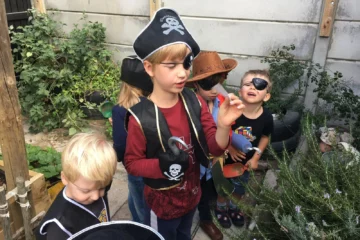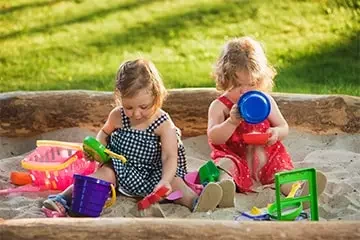Often I will hear parents say:
Where did he learn that?
I don’t know where this behaviour comes from.
Look how well she does that. Who taught her to do that?
Well, the answer to these questions is simple. Your child learnt this behaviour from watching someone in their environment. Your task is to find out who your child has been watching. This learning process is called IMITATION and all humans learn through imitation.
A major milestone for babies, toddlers and young children is learning to imitate the people in their environment. Acting just like you, is a giant step towards learning all about themselves. It is the first stage of independence. Children are able to learn a vast array of skills through imitation. It assists their development.
Children live in the present moment. This aids their senses and emotions to be heightened, thus assisting them to learn quickly. Children also spend a great deal of their time observing everything in their environment. They process the information before they give it a try. They understand that the action of doing something and imitating has significance. They have the determination to keep practising the process until they succeed at doing it. The attention they receive encourages their performance.
Children also imitate other children as this creates an instant connection between them. It is all about bonding with parents, friends, teachers and caregivers.
Lisa Nalvern MD (Developmental/Behavioural Pediatrician at Ridgewood New Jersey) says that at the age of 15 months most toddlers have developed motor and cognitive skills necessary to carry out the actions to imitate.
Children realise through imitation they are learning handy skills namely:
Focus
Observing
Listening
Processing
Action
Practice
Children also realise that through this process they can learn a language which gives them independence and the ability to communicate with others.
They imitate the sounds around them. After countless repetition.
They process the information.
They narrow down the sounds and practice till they have words.
Therefore, our responsibility as parents, families, teachers and caregivers is to provide a rich environment for children to explore and experience. I have realised as a teacher that everything in my environment is a learning experience for children. When I do things I am constantly talking to them and showing them how this object or that item works. I am quick to point out when items need caution; like a scissor; or running with items that can hurt us and its best to go slowly with these items. Children learn a great deal this way.
Remember everything in our environment is an opportunity for children to learn something. When sweeping a floor or washing dishes or loading the washing machine or weeding the garden are all teachable moments and teaches children skills they will use later in life.
Take time during your day with your child to notice how many times you are being observed and imitated by them.
“Each moment with your child is a teachable moment.” – Dr James Dobson PhD Psychology


